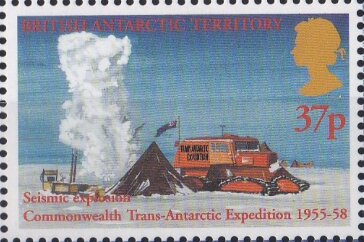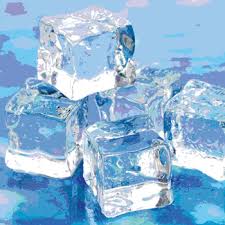Stamp: Seismic Explosion (British Antarctic Territory (BAT) 2000)
Seismic Explosion (British Antarctic Territory (BAT) 2000)
22 May (British Antarctic Territory (BAT) ) within release Trans-Antarctic Exhibition of 1955-58 goes into circulation Stamp Seismic Explosion face value 37 British penny
| Stamp Seismic Explosion in catalogues | |
|---|---|
| Michel: | Mi: GB-AT 306 |
| Stamp Number: | Sn: GB-AT 288f |
| Stanley Gibbons: | Sg: GB-AT 324 |
Stamp is horizontal format.
Commonwealth Trans-Antarctic Exhibition of 1955-58. Seismic Explosion.Also in the issue Trans-Antarctic Exhibition of 1955-58:
- Stamp - Group Photo Expedition At South Pole face value 37;
- Stamp - Map of Route taken face value 37;
- Stamp - MV Magga Dan face value 37;
- Stamp - Seismic Explosion face value 37;
- Stamp - Snow-Cat over Crevasse face value 37;
- Stamp - Snow-cat Repair Camp face value 37;
- Souvenir Sheet - Trans-Antarctic Exhibition Souvenir Sheet face value 6*37;
Stamp Seismic Explosion it reflects the thematic directions:
A flag is a piece of fabric (most often rectangular or quadrilateral) with a distinctive design that is used as a symbol, as a signaling device, or as decoration. The term flag is also used to refer to the graphic design employed, and flags have since evolved into a general tool for rudimentary signalling and identification, especially in environments where communication is similarly challenging (such as the maritime environment where semaphore is used). National flags are patriotic symbols with varied wide-ranging interpretations, often including strong military associations due to their original and ongoing military uses. Flags are also used in messaging, advertising, or for other decorative purposes. The study of flags is known as vexillology, from the Latin word vexillum, meaning flag or banner.
Ice is water that is frozen into a solid state, typically forming at or below temperatures of 0 °C, 32 °F, or 273.15 K. As a naturally occurring crystalline inorganic solid with an ordered structure, ice is considered to be a mineral. Depending on the presence of impurities such as particles of soil or bubbles of air, it can appear transparent or a more or less opaque bluish-white color.
A volcano is a rupture in the crust of a planetary-mass object, such as Earth, that allows hot lava, volcanic ash, and gases to escape from a magma chamber below the surface. The process that forms volcanoes is called volcanism.



